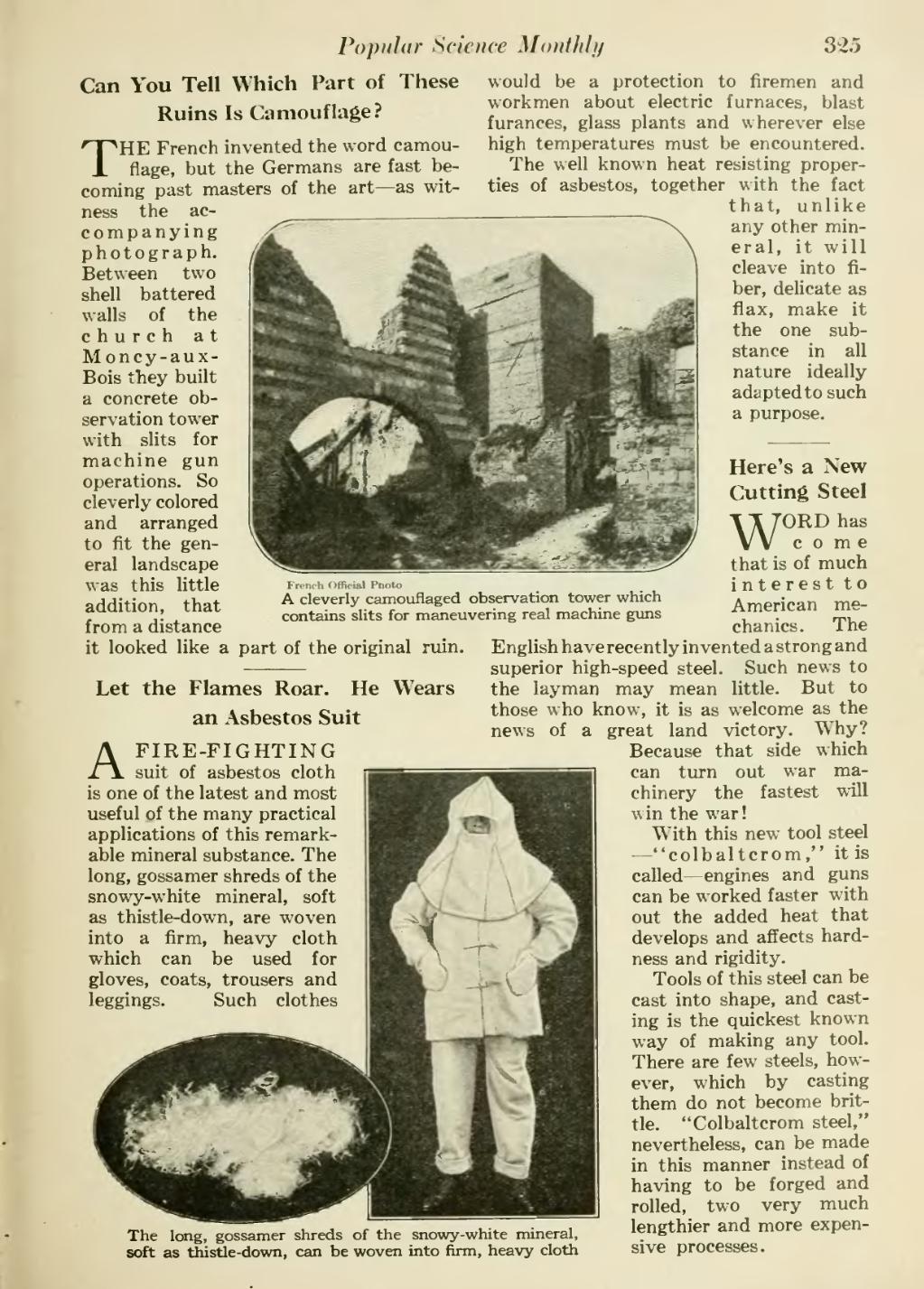Popular Science Monthly
��325
��Can You Tell Which Part of These Ruins Is Camouflage?
THE French invented the word camou- flage, but the Germans are fast be- coming past masters of the art — as wit- ness the ac-
companying photograph. Between two shell battered walls of the church at Moncy-aux- Bois they built a concrete ob- servation tower with slits for machine gun operations. So cleverly colored and arranged to fit the gen- eral landscape was this little addition, that from a distance it looked like a
���would be a protection to firemen and workmen about electric furnaces, blast furances, glass plants and wherever else high temperatures must be encountered. The well known heat resisting proper- ties of asbestos, together with the fact
that, unlike any other min- eral, it will cleave into fi- ber, dehcate as fiax, make it the one sub- stance in all nature ideally adapted to such a purpose.
��A cleverly camouflaged observation tower which contains slits for maneuvering real machine guns
��Here's a New Cutting Steel
WORD has come that is of much interest to American me- chanics. The
��part of the original ruin.
��Let the Flames Roar. He Wears an Asbestos Suit
AFIRE-FIGHTING suit of asbestos cloth is one of the latest and most useful of the many practical applications of this remark- able mineral substance. The long, gossamer shreds of the snowy-white mineral, soft as thistle-down, are woven into a firm, heavy cloth which can be used for gloves, coats, trousers and leggings. Such clothes
���The long, gossamer shreds of the snowy-white mineral, soft as thistle-down, can be woven into firm, heavy cloth
��English have recently invented a strong and superior high-speed steel. Such news to the layman may mean little. But to those who know, it is as welcome as the news of a great land victory. Why? Because that side which can turn out war ma- chinery the fastest will win the war!
With this new tool steel — "colbaltcrom," it is called — engines and guns can be worked faster with out the added heat that develops and affects hard- ness and rigidity.
Tools of this steel can be cast into shape, and cast- ing is the quickest known way of making any tool. There are few steels, how- ever, which by casting them do not become brit- tle. "Colbaltcrom steel," nevertheless, can be made in this manner instead of having to be forged and rolled, two very much lengthier and more expen- sive processes.
�� �

